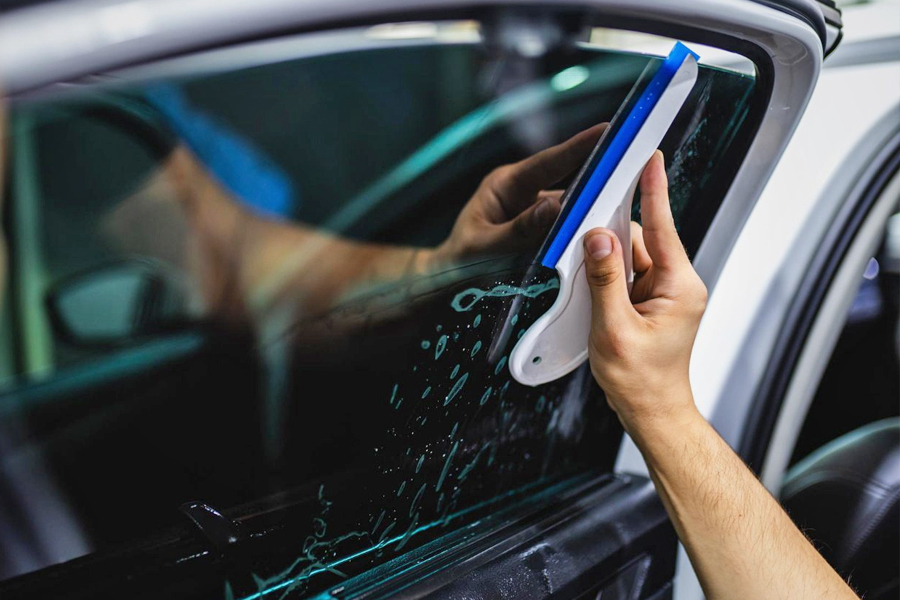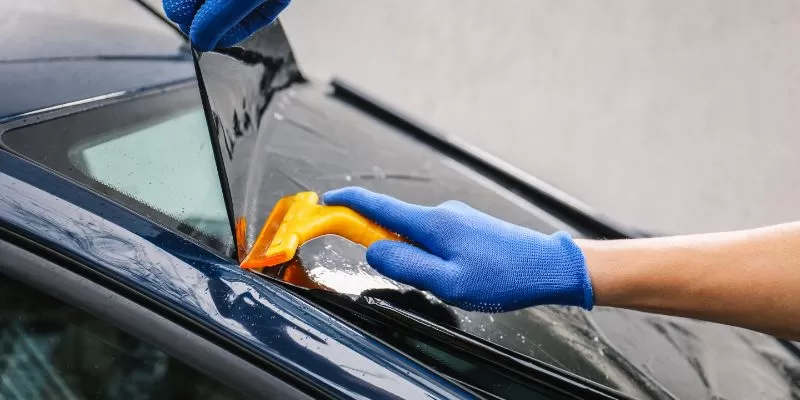Why Vehicle Window Tinting is a Must-Have for Modern Autos
Why Vehicle Window Tinting is a Must-Have for Modern Autos
Blog Article
Window Tinting Laws and Guidelines: What You Need to Know Prior To Tinting Your Cars And Truck
Before continuing with home window tinting for your automobile, it is important to acquaint yourself with the diverse legislations and standards that regulate this method across different states. These guidelines dictate the acceptable levels of tint darkness, commonly determined by visible light transmission (VLT) percentages, and include particular terms for front windscreens intended at making certain road safety and security. Furthermore, certain jurisdictions may provide clinical exceptions for individuals with certifying problems. Recognizing these intricacies can save you from possible legal ramifications, however what are the details rules in your state?
Overview of Window Tinting Rules
Window tinting legislations are often based on variant across different territories, mirroring neighborhood guidelines and security considerations. These legislations determine the allowable levels of color darkness and reflectiveness on car windows, making certain that vehicle drivers preserve appropriate exposure while additionally safeguarding versus harmful UV rays and warmth.
Many policies identify home window tinting based upon the Visible Light Transmission (VLT) percent, which indicates the amount of light that can go through the home window. Usually, lower VLT percents signify darker colors. Regulations frequently separate in between the front, side, and back home windows, with more stringent limitations related to the front windscreen to improve safety for both the chauffeur and other road users.
Compliance with home window tinting laws is essential, as infractions can result in fines, mandatory removal of the color, and potential boosts in insurance coverage costs. It is crucial for automobile proprietors to acquaint themselves with neighborhood legislations prior to proceeding with home window tinting installments.
State-by-State Color Laws
Understanding the particular home window tinting policies in each state is crucial for lorry proprietors seeking to adhere to the law. Each state in the united state has actually developed its own set of regulations governing window tinting, which can vary considerably. These policies usually dictate the allowable degrees of color darkness, the kinds of home windows that can be tinted, and any type of clinical exceptions that may use.
For instance, states like The golden state have rigorous constraints on color darkness for front home windows, while others, such as New Mexico, might enable darker tints. Furthermore, specific states mandate certain presence percents for different windows, consisting of the windscreen, front side windows, and back home windows. It is crucial for vehicle proprietors to acquaint themselves with their state's regulations to stay clear of possible penalties or charges.
Additionally, some states may call for a certification sticker label to be positioned on tinted home windows, indicating conformity with state regulations. Failing to comply with these guidelines not only risks legal repercussions however can likewise affect safety and presence while driving. Therefore, automobile owners need to carry out thorough research or get in touch with neighborhood authorities to make certain complete understanding and compliance with state-by-state color laws.
Allowed Color Levels and Kinds
Numerous lorry proprietors may be stunned to learn that enabled tint degrees and kinds vary extensively throughout different states. Each state has established its own policies pertaining to the permissible darkness and reflectivity of home window color, typically gauged by Visible Light Transmission (VLT) portions. VLT refers to the amount of light that can pass via the tinted windows; hence, a reduced percent indicates a darker tint.

Furthermore, the kinds of tint materials enabled can vary, with some states banning mirror-like or metallic finishes. It is necessary for vehicle owners to familiarize themselves with their state's details regulations to ensure compliance. Non-compliance can cause penalties, mandatory elimination of the color, or various other lawful repercussions, making it essential to understand these guidelines before continuing with setup.
Medical Exemptions for Tinting
While not all states offer allocations for medical exemptions concerning window tinting, those that do identify the requirement for particular individuals to improve visibility and convenience as a result of medical conditions. Various medical problems, such as lupus, skin cancer cells, and specific eye conditions, can make individuals particularly delicate to sunshine. As a result, these individuals might call for darker colors to secure themselves from dangerous UV rays and glare.

It is essential to keep in mind that despite having a medical exception, there might still be constraints on the degree of color permitted. Conformity with state legislations makes certain that individuals are both protected and within legal limits. Those taking into consideration medical exemptions need to call their neighborhood Division of Electric motor Cars or comparable authority to recognize the needs and treatments required to use for an exemption effectively.
Fines for Non-Compliance
Stopping working to abide by home window tinting regulations can result in considerable penalties, which differ by state. Police are encouraged to provide citations for vehicles that do not abide by the specified tinting laws. These our website charges typically consist of penalties, which can vary from moderate amounts to a number of hundred bucks, relying on the intensity of the offense and the state concerned.
In some territories, repeated offenses might cause intensifying penalties or extra fines, such as compulsory court looks. Non-compliance may require the removal of unlawful tinting, commonly at the proprietor's expenditure. In extreme situations, habitual wrongdoers might encounter suspension of their vehicle enrollment till conformity is attained.
Additionally, insurance policy implications might emerge from getting several citations for window tint violations. Insurers might see such offenses as an indicator of riskier habits, potentially bring about boosted premiums or problem in protection.
To stay clear of these fines, it is essential for lorry proprietors to acquaint themselves with their local home window tinting regulations and make sure that their vehicle complies (Window Tinting). This positive approach not only stays clear of legal implications but additionally promotes roadway safety
Verdict

Most guidelines identify home window tinting based on the Visible Light Transmission (VLT) percent, which indicates the quantity of light that can pass with the home window. Compliance with window tinting guidelines is essential, as offenses can result in fines, necessary removal of the color, and potential boosts in insurance policy premiums.Comprehending the certain home window tinting guidelines in each state is essential for automobile owners looking for to conform Full Report with the law. These laws commonly determine the allowable levels of color darkness, the kinds of windows that can be tinted, and any clinical exemptions that may apply.
For instance, states like The golden state have stringent constraints on color darkness for front home windows, while others, such as New Mexico, may permit darker tints.
Report this page